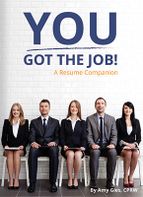You’ve run spell check, read it through for errors, added white space, and used formatting elements to make your resume easy to read and pleasing to the eye. Is that good-looking resume getting you interviews? While it’s certainly important for your resume to be reader friendly and error free, it’s what’s inside that resume that really counts. Does your resume content measure up to what employers are expecting in the current job market? Check out these five elements that are crucial content for today’s resumes.
Summary
Attention spans are short, and you have only seconds to get your reader’s attention. Convince an employer to continue reading your resume by including a compelling summary section at the top of it. This section directly below your name and contact information provides a synopsis of your professional background and gets the reader interested enough to go on. Important items to include are: core skills and strengths, noteworthy accomplishments, and significant past job functions and experience. Most importantly, make it concise. Generally your summary section will occupy one quarter to one third of the first page of your resume, dependent upon your level of experience and line of work.
Keywords
Including appropriate resume keywords can unlock interview opportunities. Generally a recruiter or HR manager will scan resumes rather than read them, so including relevant keywords can help catch their eyes. Additionally, many large employers use applicant tracking systems (ATS) to collect and store resumes and candidate information. These systems allow the employer to search for candidates with specific skills or experience and they can also rule out those who are unqualified by leaving them out of the search results. Ensure that you stay in the applicant pool by including keywords that are applicable to the job and industry. Job descriptions can be a great source of ideas for keywords.
Evidence
Job seekers commonly include a laundry list of job duties and skills on their resumes while omitting evidence of successful performance. On your resume, it’s better to show than tell. Substantiate your abilities and job responsibilities by describing not only what you did but how you did your work. One way to demonstrate your abilities is to use PAR statements, where PAR stands for Problem-Action-Result. Your statements describe the business problems/challenges/situations you tackled, the actions you took to resolve them, and the positive business results that stemmed from your actions. These results-action oriented statements show the employer the value you have brought to past positions and that you have the potential to do the same for them.
Results
Speaking of results, we’re giving them their own section here because they’re that important for your resume. When describing results in your PAR statements, quantify them in the form of general numbers, dollars or percentages. How many more leads did the company sales team get from your online marketing campaign? How much money did the company save due to a process you streamlined? By what percentage did complaints decrease after your customer service idea was implemented? It’s important to be honest here and determine accurate numbers to the best of your ability. Keeping track of your results as you go through your career is a good professional habit as it not only can help when it’s time to write your resume or look for a job, but it can also help you demonstrate your value in your current position when it’s time for your performance review.
Story
When preparing your resume, it’s essential to approach it from the employer’s perspective. Your resume should tell a clear story of your career rather than present a puzzle that the employer must put together (they won’t). Instead, convince the employer that you are the missing piece to their puzzle and use your resume to guide them toward envisioning a picture of how you could fit the position they‘re offering. In addition to your summary section at the top of your resume, a job narrative, or summary statements describing each position in your experience section, can assist the employer in understanding your story. Your cover letter assists here, but your resume should be able to stand on its own. By focusing on what the employer needs and writing your resume from that perspective, you increase your chances of being invited for an interview.
Capstone resume writers with recruiting and hiring backgrounds create affordable resumes, cover letters and LinkedIn profiles that get results. Get started today!

